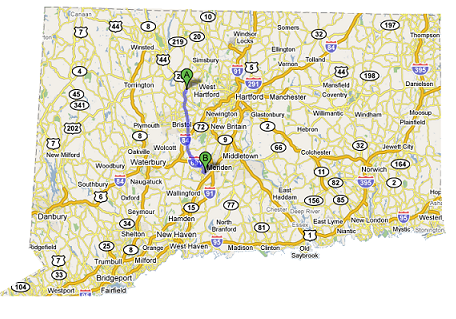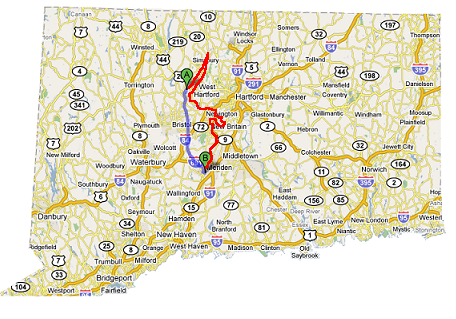Apparently, sense of direction runs in the family.
My sister T is absolutely terrible with directions. In one particular story, she went to a friend’s wedding rehearsal. After the rehearsal they were all headed over to a restaurant for dinner. She brought directions. In fact, she was the only one to bring directions. A few of her friends were looking for instructions on how to get there so Tree copied the directions and passed them out to virtually everyone.
Everyone pulled out of the parking lot and everyone arrived at the restaurant – except Theresa. She got horribly horribly lost.
well, if I didn’t already know, last night was a great indicator of my equally poor self-location skills. I went over to a classmate’s house in Avon to work on a project. We finished up around 10:45ish, and I left to head home. This is where I needed to go:
I took my turns, and got on what I thought was CT-177South. It was, instead, CT-167N.
I got lost. After 30 minutes I was able to get myself turned around and back on track. But by this time, I’d nearly run out of gas so I stopped in New Britain to fill up the tank. I had heard rumors that Darcy, Viv, and Irene were gathered at Irene’s place for a movie so I stopped by and enjoyed some nachos and banter before heading out again – at which point I promptly got lost in downtown New Britain. Driving down alleys and random one-way streets, I eventually got back to route 9. Only to find myself going the wrong direction on route 9. Thankfully I quickly fixed this error, turned around and was immediately pulled over for a headlight being out.
Ugh. what an annoying night.
I finally got to bed at 2am. This was my path:
sigh. My next big purchase was going to be a watch – it looks like it will be a GPS instead.

